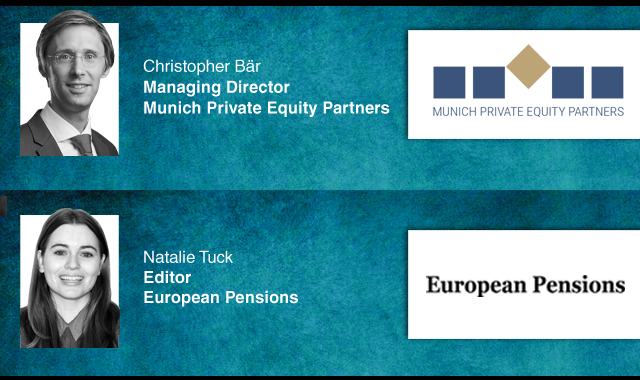The trend towards passive investment has gained traction since the financial crisis but index providers have been anything but staid. Lynn Strongin Dodds reports
Competition in the index provider space is intense and there is a race between the key players such as FTSE Group, MSCI, Stoxx and S&P to not only slice and dice the standard equity benchmarks into finer tranches, but to also break new bo-undaries in alternative asset classes as well as risk/return strategies.
It is not surprising that passive managers were the main beneficiaries of the stock market crash. Active managers came under fire for not delivering the promised returns and institutional investors responded by searching for lower cost options. Deborah Ciervo, senior director, international markets and products at Dow Jones Indexes, notes: “Indices have become extremely popular these past years, especially since the financial crisis, as the principle of passive investment has gained popularity. The broad acceptance of indexing as an investment philosophy has grown dramatically, especially since it offers many advantages including lower costs, information transparency and rules-based methodology. The increasing number of exchange-traded products is representative of this growing market.”
Some market participants, though, believe that the migration pred-ated the events in 2008 with providers already sharpening their game. Konrad Sippel, executive director, global head of product development at STOXX, says: “I think indices are playing an increasingly important role, but the trend towards passive investment was happening before the financial crisis. This is because there had been numerous academic studies that showed active managers did not beat the equity benchmarks over long periods such as ten years. What has changed since 2008 is the quality, transparency and structure of the indices. They are much more strategy based and blend both active and passive strategies.”
As a result, the relatively staid world of benchmark investing has become more exciting. The industry has not only seen the return of fundamental indices but also a new era of innovation particularly in risk weighted alternative strategies, such as minimum variance or minimum volatility indices. Dimitris Melas, an executive director at MSCI, says: “The standard equity benchmark still dominates but today there are different ways to capture the equity risk premia. Providers have responded by developing a much more comprehensive offering of not only markets, geographies, sectors and alternatives but also different types of risk/return profiles and volatility strategies. The objective is to enable investors to capture all the investment opportunities in a transparent and low cost way.”
Index providers first broke the mould in 2005 with fundamental indices which, unlike their market cap counterparts, weights companies according to measures of their economic worth other than size. Advocates see them as a sensible anchor for rebalancing and contra-trading against the market’s constantly shifting expectations, fads, bubbles and crashes. Resea-rch Affiliates Fundamental Indices (RAFI) – a partnership between Research Affiliates and FTSE – was first out of the gate, using four fundamental measures: book value, cash-flow, sales and dividends. Other variations on a theme include the wealth weighted indices from Global Wealth Allocation, who also joined forces with FTSE. These indices incorporate cash-flow, net profits and book value.
Leading pension stalwarts such as the California Public Employees’ Retirement System (CalPERS), the Dutch healthcare scheme PGGM, the AP2 state fund of Sweden and the UK’s Merseyside local authority pension fund were among the first movers. The more recent recruits have been Stork, the pension fund for the Dutch industrial group, while Swiss PK Post pension fund recently increased its investment with Tobam, the French self-styled “anti-benchmark” managers.
Despite their growing popularity, fundamental indices are still a proverbial drop in the ocean having garnered $50bn to $60bn in the past six years compared to the approximately $10 trillion of assets benchmarked against the traditional market cap equity variety, according to industry figures. Although they have been refined, one of the main criticisms of the fundamental indices is that they have too strong a value and small cap bias and suffer during short-term market shocks (such as in the last crash when these indices fell more than the markets they were tracking). For example, many of the fundamental indices dropped more than the 40% suffered by the MSCI World in the wake of the stock market crash in 2008.
Market cap weighted indices are also not perfect and their flaws have been well documented. The proponents argue that they are simple and the best representative of the investable opportunity set. The critics note that they are concentrated in a few names and as a result can topple easily if the main stocks falter. For instance, the S&P 500 index holds a large percentage of its overall weightings in the top ten stocks of the index and any major shifts in those companies would have a greater impact on the overall index. In other words, they perform well when the environment for large-caps is favourable but are less attractive when these stocks suffer from a bout of weakness.
Although at one time, index providers were firmly divided into two camps, the financial crisis caused a shift in attitude. As Melas points out: “I think the standard equity benchmark will continue to be the most popular for now because these fundamental indices are still in their embryonic stage.
It also depends on an investor’s time horizon. Those with a longer-term view are able to sit out the short-term volatility which these indices experienced during the financial crisis. However, the best approach is to use them as complementary strategies.”
John Davies, senior director of S&P, agrees: “We are seeing pension funds use a mixture of market cap and fundamental indices. In general, things have definitely evolved from the early days when pension funds used indices purely as a benchmark tool. Today they are looking for much more granularity in terms of regions and sectors as well as themes such as energy and water. We are also seeing a greater interest in using customised benchmarks.”
Jennie Austin, director of relation-ship management at FTSE Group echoes these sentiments. “We are definitely seeing a move to fundam-ental and other alternative indices as well as an increasing demand for bespoke indices and those based on responsible investment. Other key focuses are on smoothing out volatility and protecting the down-side. In response to the former, we launched the FTSE EDHEC-Risk Efficient Index Series which aims to capture equity market returns with improved risk/reward efficiency compared to cap-weighted indices. And for the latter, we launched the FTSE Diversification Based Investing Index Series, in association with QS Investors.”
Other index providers have their own products such as MSCI’s minimum volatility range which uses algorithms that apply a number of constraints to minimise volatility. The resulting indices have sector weightings that are relatively close to the parent index but may exclude certain stocks. As with the FTSE EDHEC, the upside might not be as great but the downside risk is protected.
As for the fixed income space, it is still early days, but recent launches have included the RAFI US corporate bond indices calculated by Ryan ALM, a company special-ising in fixed income benchmarks, while Pimco’s Global Advantage Bond Index (Gladi) family of indices weights international bonds by the gross domestic product of their respective countries of issue. The highest weights are allocated to those with the highest incomes. Meanwhile the alternative arena has seen Dow Jones debut its Dow Jones Brookfield Emerging Markets Infrastructure Index as well as its Dow Jones CME FX$INDEX. The index is designed to measure the performance of a basket of currencies traded against the US Dollar. It is composed of CME-traded futures contracts and is currency weighted to reflect the general global economic use of the component currencies.
These developments, though, are not confined to the defined benefit space. FTSE Group and Pension-DCisions, an analytics specialist, have launched the UK’s first benchmark indices for multi-asset defined contribution pension funds, providing schemes with a yardstick to measure their default funds by.
Latest News
-
Nordea Life & Pension written premiums reach ‘record high’ €3.1bn in Q1
-
Norway’s GPFG makes 6.3% return in Q1
-
Pensioenfonds PostNL funding ratio sees slight increase
-
Record number of Sampension customers contributing extra to pensions
-
EIOPA, EBA and ECB create framework for collaboration on DPM 2.0 standard
-
Spanish individual pension plan and EPSV assets increase by 3.33% in Q1
Podcast: The benefits of private equity in pension fund portfolios

The outbreak of the Covid-19 pandemic, in which stock markets have seen increased volatility, combined with global low interest rates has led to alternative asset classes rising in popularity. Private equity is one of the top runners in this category, and for good reason.
In this podcast, Munich Private Equity Partners Managing Director, Christopher Bär, chats to European Pensions Editor, Natalie Tuck, about the benefits private equity investments can bring to pension fund portfolios and the best approach to take.
In this podcast, Munich Private Equity Partners Managing Director, Christopher Bär, chats to European Pensions Editor, Natalie Tuck, about the benefits private equity investments can bring to pension fund portfolios and the best approach to take.
Podcast - The power of three: Using Common Contractual Funds to improve tax outcomes for investors

Large asset owners are still investing in equities in a way where they are taxed on their income. The implication is that they get a poorer return. They need to, and can, improve this, but how?
In this podcast, AMX Head of Client and Manager Development, Aaron Overy, and AMX Product Tax Specialist, Kevin Duggan, discuss with European Pensions Editor, Natalie Tuck, about three options to help ensure good withholding tax outcomes for institutional investors.
In this podcast, AMX Head of Client and Manager Development, Aaron Overy, and AMX Product Tax Specialist, Kevin Duggan, discuss with European Pensions Editor, Natalie Tuck, about three options to help ensure good withholding tax outcomes for institutional investors.
Mitigating risk
BNP Paribas Asset Management’s head of pension solutions, Julien Halfon, discusses equity hedging with Laura Blows
© 2019 Perspective Publishing Privacy & Cookies








Recent Stories